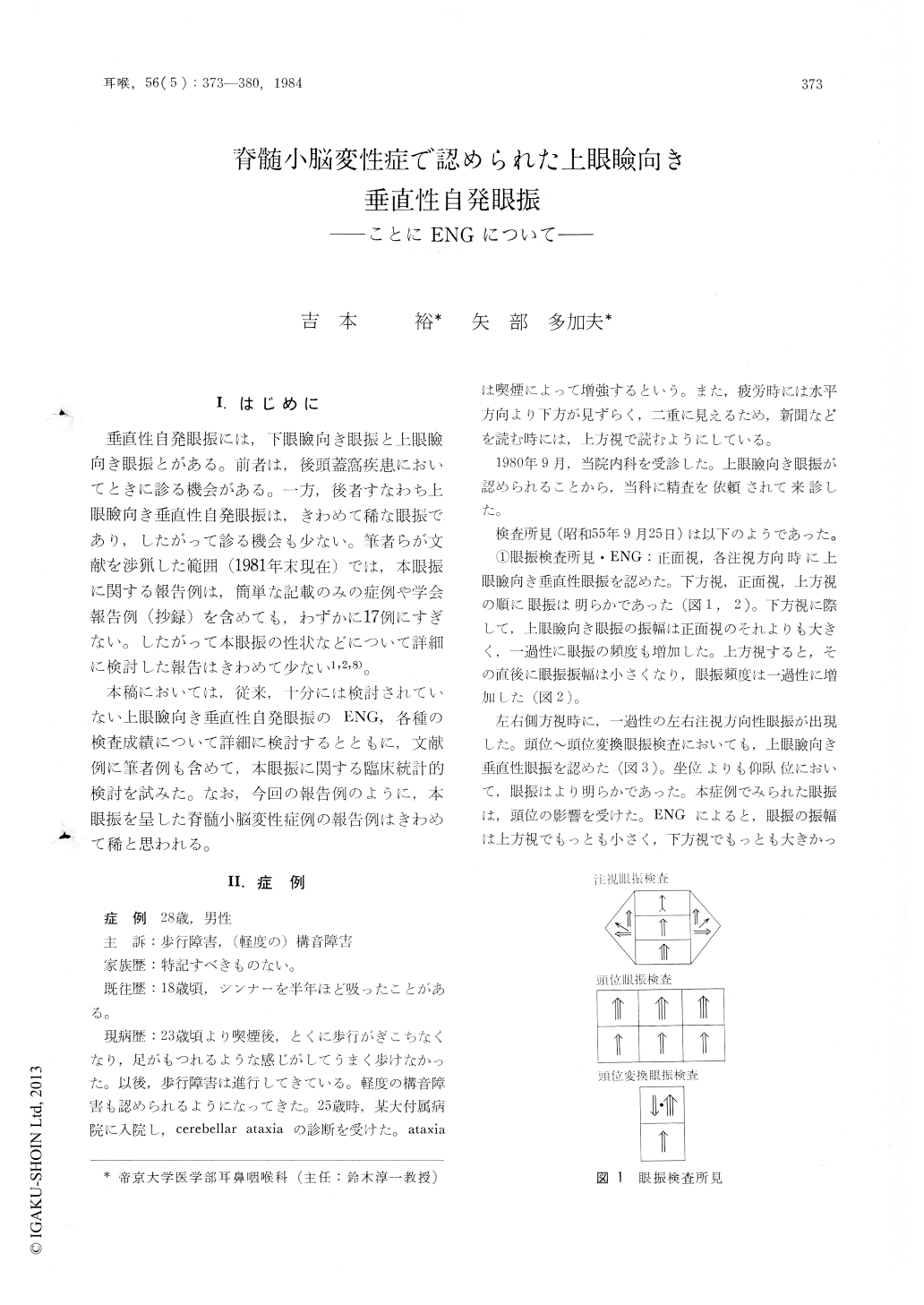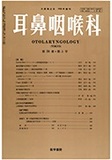Japanese
English
- 有料閲覧
- Abstract 文献概要
- 1ページ目 Look Inside
I.はじめに
垂直性自発眼振には,下眼瞼向き眼振と上眼瞼向き眼振とがある。前者は,後頭蓋窩疾患においてときに診る機会がある。一方,後者すなわち上眼瞼向き垂直性自発眼振は,きわめて稀な眼振であり,したがって診る機会も少ない。筆者らが文献を渉猟した範囲(1981年末現在)では,本眼振に関する報告例は,簡単な記載のみの症例や学会報告例(抄録)を含めても,わずかに17例にすぎない。したがって本眼振の性状などについて詳細に検討した報告はきわめて少ない1,2,8)。
本稿においては,従来,十分には検討されていない上眼瞼向き垂直性自発眼振のENG,各種の検査成績について詳細に検討するとともに,文献例に筆者例も含めて,本眼振に関する臨床統計的検討を試みた。なお,今回の報告例のように,本眼振を呈した脊髄小脳変性症例の報告例はきわめて稀と思われる。
Eye movements were studied with ENG in a case of spinocerebellar degeneration with primary position upbeat nystagmus. The nystagmus increased in amplitude on upward gaze, decreased on downward gaze, and truncal ataxia was noted. Neurotological examinations revealed such symptoms as ocular dysmetria, saccadic eye movement, second plase in both caloric test and rotation test, abolishment of visual suppression in the caloric test. These results suggest that the primary position upbeat nystagmus in this case should be due to cerebellar lesion.

Copyright © 1984, Igaku-Shoin Ltd. All rights reserved.


